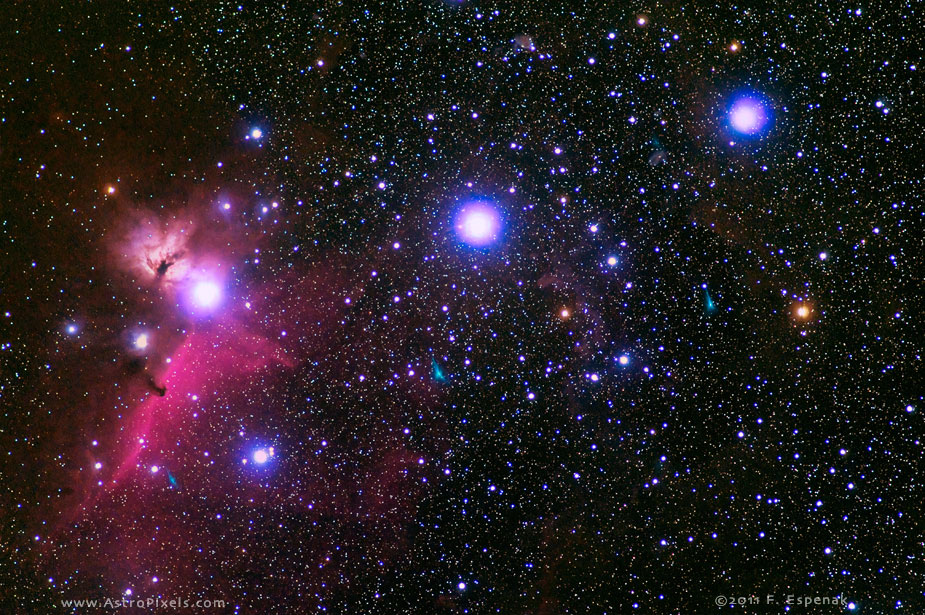Belt of Orion
The Belt of Orion is an asterism formed by the three bright stars (from left to right) Alnitak (Zeta Orionis), Alnilam (Epsilon Orionis) and Mintaka (Delta Orionis). Alnitak is a triple star system approximately 800 light years distant. The brightest component is a hot blue class O supergiant with an apparent visual magnitude of 1.70. Alnilam is a large blue class B supergiant at a distance of about 1300 light years. It has an apparent visual magnitude of 1.70. Mintaka is another a multiple star system in which the primary is a double consisting of class B and class O stars. Its distance is some 900 light years and its apparent visual magnitude is 2.23.
The asterism of Orion's belt was known to many cultures including the Arabs, Chinese and the Americas. Among Christians in Europe, the stars were often associatd with the three Magi.
Extending below Alnitak is the emission nebula IC 434 containing the Horsehead Nebula (Barnard 33). At a distince of ~1500 light years, red glow of IC 434 is due to Hydrogen gas that is ionized by the nearby bright star Sigma Orionis. The dark nebula forming the Horsehead is a dark cloud of dust seen in silhouette against the bright emission nebula.
The three belt stars and the Horsehead Nebula are part of a larger region sometimes called the Orion Complex.
Technical Details
- Object: Belt of Oron
including Horsehead Nebula - Object Type: Bright Stars and Emission Nebulae
- Date/Time: 2010 Feb 15 at 03:56 UTC
- Location: Bifrost Astronomical Observatory, Portal, AZ
- Telescope: Nikkor 300mm F/2.8 Lens
- Mount: Astro-Physics 1200GTO
- Camera: Nikon D300
- Exposure: 8 x 180s, f/2.8, ISO 800
- File Name: ORI-102w.jpg
- Processing: Stack of 8 Images, Crop, Levels, Unsharp Mask (Photoshop CS5)
- Original Image Size: 2848 x 4288 pixels (12.2 MP); 9.5" x 14.3" @ 300 dpi
- Rights: Copyright 2010 by Fred Espenak. All Rights Reserved. See: Image Licensing.
